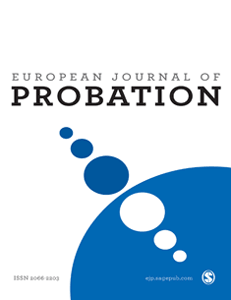Measuring the quality of the Working Alliance in Flemish community supervision practice: A validation study of the Working Alliance for Mandated Clients Inventory
Measuring the quality of the Working Alliance in Flemish community supervision practice: A validation study of the Working Alliance for Mandated Clients Inventory
Author(s): Johan Boxstaens, Jan DepauwSubject(s): Labor relations, Welfare systems, Penal Policy
Published by: SAGE Publications Ltd
Keywords: Community supervision; working alliance; quality assessment;
Summary/Abstract: This article describes the psychometric properties and factor structure of the Working Alliance for Mandated Clients Inventory (WAMC-I). First, we explain how, in contrast to other European jurisdictions such as England and Wales, community supervision in Belgium remains a specific form of social work practice, which is referred to as “social work under judicial mandate” (Devos, 2009: 18). Just as in general social work practice, the professional relationship between practitioners and clients1 is considered to be of paramount importance in community supervision practice. To capture the essence of this professional relationship, we draw on the pan-theoretical concept of the Working Alliance (WA) (Bordin, 1979) and a theoretical adaptation of this concept for the field of community supervision (Menger, 2018). Building on this theoretical adaptation, an instrument to measure the WA was developed for the Dutch context of community supervision: the WAMC-I. The objective of the present study is to assess the psychometric properties and factor structure of the WAMC-I with a sample of justice assistants2 and clients in the Flemish Houses of Justice. This study offers an elaborated conceptualization and operationalization of the concept of the WA. Preliminary tests on the psychometric properties and factor structure of the WAMC-I show that three factors on the WAMC-I for professionals proved valid and reliable: trust, clarity of rules and regulations and reactance. However, tests on the WAMC-I for clients showed no factor solution. Based on the theoretical framework of the WA and scientific-methodological arguments we express our reservations about the use of the WAMC-I and offer suggestions for improvement.
Journal: European Journal of Probation
- Issue Year: 12/2020
- Issue No: 2
- Page Range: 91-111
- Page Count: 21
- Language: English
- Content File-PDF

